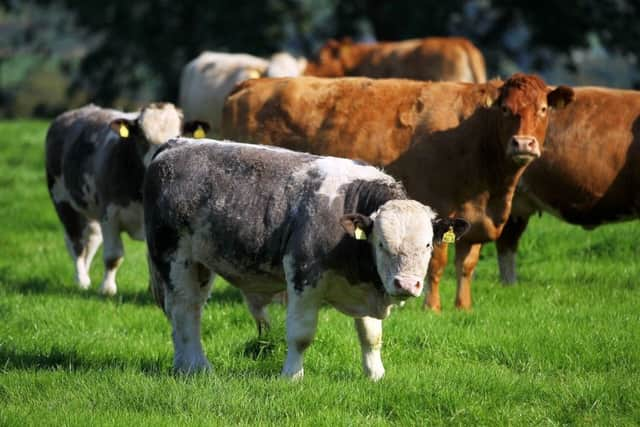Protect weanlings against respiratory disease this winter


Preparation for these periods should include a programme for minimising the risk of an outbreak of respiratory disease.
What negative impact does pneumonia have on the production system?
Advertisement
Hide AdAdvertisement
Hide AdThe main costs of an outbreak include decreased production, increased mortality and higher labour and treatment costs. There are also negative long-term impacts. Pneumonia can lead to fibrosis (a hardening of the lung tissue) and a reduced lung capacity, even in a recovered animal. This results in a reduced daily live weight gain and a longer finishing time for the beef producer. Studies have shown that bulls requiring treatment for pneumonia took between 44 to 59 extra days to fatten in comparison to untreated bulls.
The stress of weaning can have a weakening impact on the immune system, leaving the animal at risk of infection. Reducing stress can be achieved by considering the following:
1. Anthelmintic dosing
Lungworm can build up on fields over the summer months and can be a particular threat towards the latter part of the grazing season. Parasites, such as lungworm, have a negative effect on the immune system of cattle as well as damaging the lungs directly. A dosing programme for lungworm should be in place over the grazing season with a final dose given at least two weeks prior to weaning. This will ensure optimal lung health and reduce stress at weaning. Pour-ons, injections and even a bolus formation are available with activity against lungworm. Discuss the most appropriate anthelmintic product for your herd with your veterinary practitioner and ensure the timing and dose rate is accurate.
2. Nutrition and creep feeding/grazing
The weaning process is stressful on calves and increases the risk of disease around this time as a result. It is essential that this process is managed with as little stress placed on the calf as possible. Introduce concentrates at least one month prior to weaning. Use a creep grazing or a creep feeding system. Creep grazing involves minimal added cost while allowing the calves access to fresh grazing via a creep gate ahead of their dams. Creep feeding may be justified in certain situations but does involve the added expense of concentrate feed. Creep grazing or feeding should be done for at least one month prior to weaning.
3. The weaning process
Advertisement
Hide AdAdvertisement
Hide AdAbrupt weaning, where all of the dams are removed at one time, is very stressful for the calf and lowers its ability to fight off infections. Therefore, abrupt weaning is not advised. It is recommended that calves are gradually weaned. Remove approximately one third of the dams every five days from the batch. The weaned dams should be moved out of sight and sound of their calves.
Cows that remain have a calming effect on the weaned calves. When the final group of cows are removed the majority of the calves are already weaned and settled.
4. Avoiding routine procedures around weaning
All routine procedures must be carried out at a time separate to weaning. Procedures such as castration are ideally carried out under six months of age. If calves are over six months at weaning then castration should be timed for four weeks before weaning or at least two weeks after weaning. These procedures induce pain which is stressful for the animals. Stress can therefore be reduced via management of pain using pain relief or local anaesthetic.
Vaccination
Be aware that different strains of the same pneumonia-causing agent can be present in the same animal or other animals within the group. Therefore, selecting a vaccine that will give a broad level of protection is important.
Advertisement
Hide AdAdvertisement
Hide AdProtection against BRSV and PI-3 viruses and the bacteria Mannheimia haemolytica can be provided by Bovipast® RSP. Bovipast® RSP will give protection against the most commonly isolated strains of Mannheimia haemolytica that have been found in beef finishing units. Home bred weanlings should be vaccinated at least six weeks before weaning commences with a second shot given four weeks later. This allows the animal to develop a protective immune response before the stress of weaning has an impact on immune function.
Bovilis® IBR marker live can be administered either intranasally or intramuscularly as a single shot with either shot of Bovipast® RSP which greatly reduces the handling of animals. Purchased weanlings can receive Bovilis IBR marker live intranasally after arrival which will provide protection in four days.
Bovipast® RSP can be given at this time and a second shot four weeks later to provide broad protection against the common viruses and bacteria throughout the housed period.